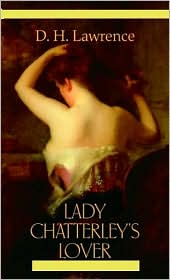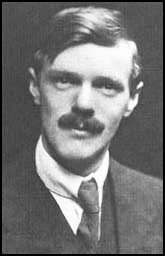“We ought to be able to arrange this sex thing as if we were going to the dentist.”
A book which  has achieved more notoriety for its sex scenes (shocking in 1930, when the book was written) than for its character studies, Lady Chatterley’s Lover focuses on the affair between Constance, the “sturdy” young wife of Clifford Chatterley, and the gamekeeper of the Chatterleys’ estate in the remote midlands. Constance, who married Clifford a month before he left for World War I, has become his caretaker since his return from the war, paralyzed from the waist down and impotent. A writer who surrounds himself with intellectual friends, Clifford regards Connie as his hostess and caregiver and does not understand her abject yearning for some life of her own.
has achieved more notoriety for its sex scenes (shocking in 1930, when the book was written) than for its character studies, Lady Chatterley’s Lover focuses on the affair between Constance, the “sturdy” young wife of Clifford Chatterley, and the gamekeeper of the Chatterleys’ estate in the remote midlands. Constance, who married Clifford a month before he left for World War I, has become his caretaker since his return from the war, paralyzed from the waist down and impotent. A writer who surrounds himself with intellectual friends, Clifford regards Connie as his hostess and caregiver and does not understand her abject yearning for some life of her own.
The distance between Constance and Clifford increases when Mrs. Bolton, a widow from the village, becomes his devoted caretaker, and he becomes increasingly dependent upon her. In a remarkable scene, Clifford finally tells Connie that he’d like an heir, and he does not care whom she finds to be the father of “his” child. He believes, in fact, that he could treat her affair as if it were a trip to the dentist. Connie, yearning for an emotional closeness which she has never experienced before, soon becomes involved with Mellors, the estate’s gamekeeper. Crude and anti-social, Mellors has an honesty and lack of pretension which Connie finds refreshing.

Throughout the novel, Lawrence creates finely drawn characters whose interactions and gradual changes are explored microscopically. The growth of love between Connie and Mellors is complicated by the increasing self-centeredness of Clifford, whose outrage at rumors of their affair is motivated by Connie’s choice of someone so far beneath her. To Clifford, the separation of the social classes is an integral and inevitable part of life. Devoted to achieving financial success even at the expense of his workers, the paralyzed Clifford is depicted as a symbol of unfeeling aristocracy and government. Mellors, by contrast, is vigorous and full of life, a strong man of character who obeys his instincts and stands up for what he believes.
Dealing with themes of love, passion, respect, honor, and the need for understanding, Lady Chatterley’s Lover is a complex, character-driven novel which, though dated, celebrates the driving passions which can make life worth living. The romantic scenes and language here are tame by modern standards, and the extreme behavior and willingness to flout convention by Connie and Mellors may be less realistic, psychologically, than what would make sense to a modern reader. Firmly rooted in the 1930’s, the novel shows an insensitive Clifford adhering to outdated values, based on outdated economic structures, while Connie and Mellors, freed from these conventions, explore their inner natures and their humanity.
Also reviewed here: SONS AND LOVERS and WOMEN IN LOVE
